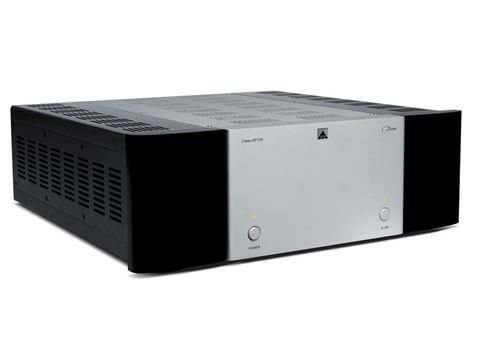TechRadar Verdict
Pros
- +
Lively sound
- +
Plenty of musical appeal
Cons
- -
Detail not always among the best: Runs exceptionally hot in Class A mode
Why you can trust TechRadar
XTZ hails from Sweden and is responsible for the room acoustics measurement system we reviewed a while back. The company's range isn't huge, but it includes an integrated amp, a CD player, a variety of speakers and some home cinema-oriented electronics and speakers, too.
We have got our hands on the AP-100 power amp. There's no preamp yet, though we'd be prepared to bet on the imminent arrival of one.
Running hot
The big thing with this amp is its ability to work in Class A, the 'holy grail' of amplifiers that avoids the dreaded crossover distortion by ensuring the output transistors are always passing current. It also operates in conventional Class AB and you can select which mode it employs from the front panel.
XTZ cautions that the unit runs hot in Class A and it certainly does. It also runs pretty warm in Class AB and, in fact, it evidently runs with more standing current than most in this mode.
XTZ quotes 110 watts in Class AB and 50 watts in Class A, though with the latter mode you can still get 110 watts from the amp, they just aren't Class A watts. This means that the decision on which mode to use is entirely down to sound quality.
Power-hungry
Construction is very solid and based around an internal steel frame, which also provides screening between input, power supply and the two power amp circuit boards. Large internal heatsinks handle the heat.
Construction is good, but not tweaky, with no fancy brand-name components, but plenty of good quality parts, nevertheless. The amp can optionally be made to shut down when no music is played for a while, and it can be bridged for the power-hungry.
Full-bodied
Obviously it's tempting to play with the mode switching and see how much difference one can hear. We decided to avoid that, however, and instead had a good, long session with the amp in Class AB, so we could get a general feel for it, before switching to Class A.
This turned out to be a good plan, because we soon became accustomed to the amp's character. It's lively and full-bodied and it can do some lovely subtle things with quieter tracks, but it's not always the most detailed or sophisticated.
Very competitive
We've long enjoyed using symphonic recordings on the Water Lily Acoustics label for auditioning hi-fi. These recordings are unusually ambient due to their simple microphone technique, but they have lots of detail: it just takes a special kind of hi-fi to bring it all out.
The Class-AP100 doesn't quite get as much out of these discs as some we've heard. Despite that, it presents the music both plausibly and attractively. In other recordings and repertoire, it preserves those qualities consistently and avoids many of the pitfalls of other budget separates, including significantly the issue of coloration.
Its tonal rendition of sounds that experience has shown to be tricky, such as male vocals, is very good, with perhaps the merest trace of lower-midrange richness, but hardly the sort of thing to get upset about.
The deep bass is not quite as weighty and solid as some but has enough kick for rock and enough extension for church organ, while extreme treble is just a shade on the dry side but, in context, very good.
There's not much around that we can compare this amp to directly, at least not in the way of power amps, but among integrated models it competes with favourites from Creek, Cambridge Audio, Arcam and so on. That it does so, while retaining its own character – and its mode-switching feature too – is admirable.
Follow TechRadar Reviews on Twitter: http://twitter.com/techradarreview

